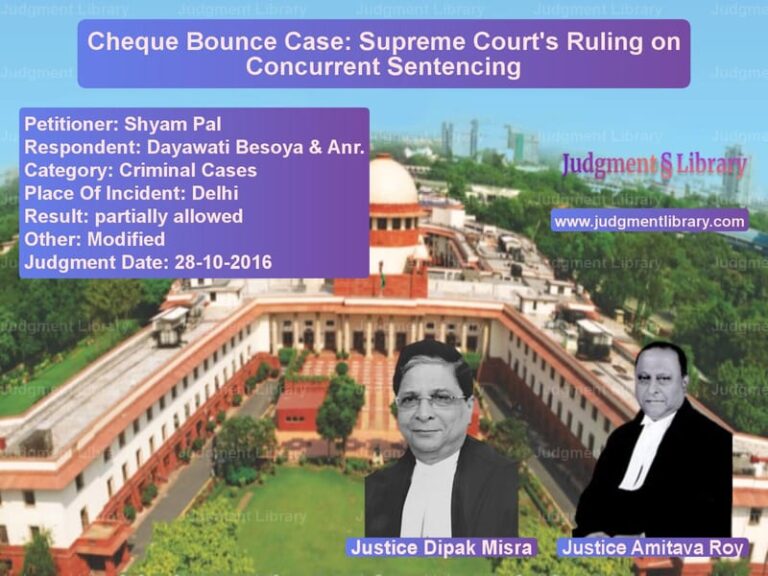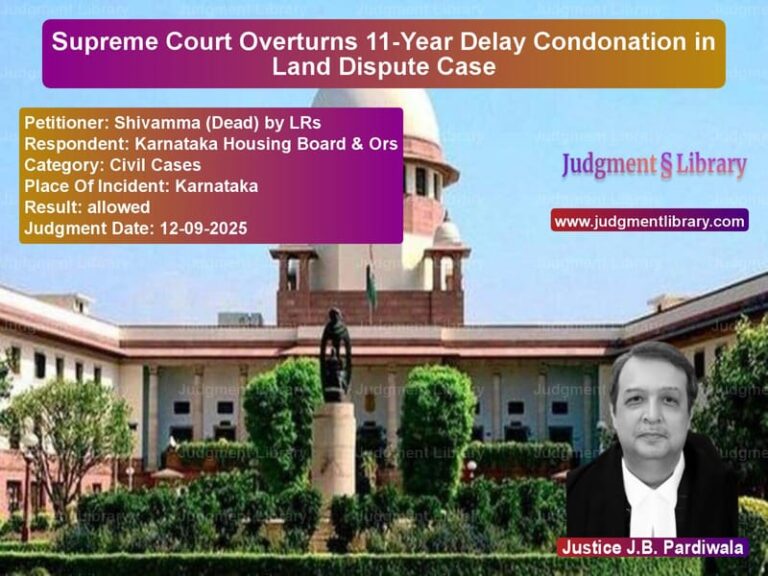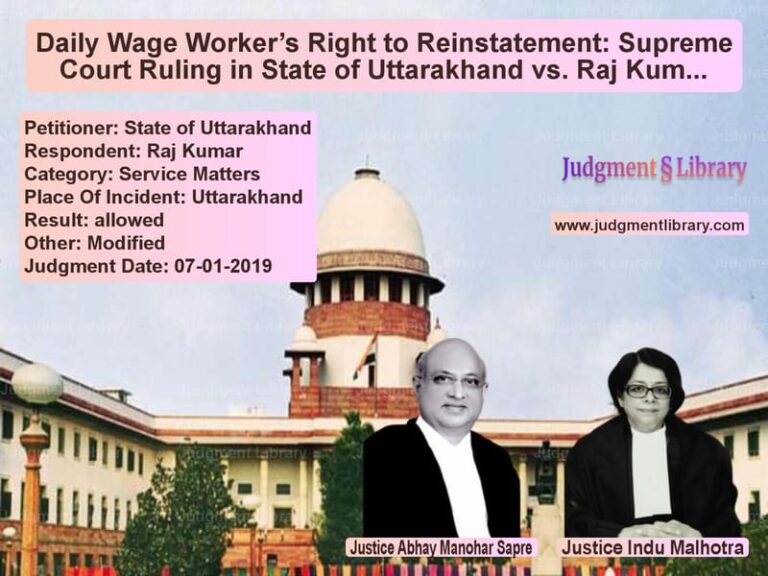Supreme Court Rules on Substantial Question of Law in Civil Appeals
The Supreme Court of India, in its ruling on Apparaju Malhar Rao v. Tula Venkataiah & Others, clarified the necessity of framing a substantial question of law before admitting a second appeal under Section 100 of the Civil Procedure Code (CPC). This judgment has significant implications on how second appeals are admitted and decided by High Courts across India.
Background of the Case
The case arose from a dispute over the ownership and possession of a piece of land measuring 5 guntas and 7 square yards, located in Mankanmathota, Karimnagar. The plaintiff, Tula Venkataiah, had filed a suit for a perpetual injunction against the defendants, seeking to restrain them from interfering with his possession of the land.
The trial court ruled in favor of the plaintiff, but the first appellate court overturned this decision. Upon further appeal, the High Court reinstated the trial court’s judgment without formulating a substantial question of law. This led the defendant to approach the Supreme Court, challenging the High Court’s ruling.
Legal Issues Considered
The Supreme Court examined the following critical issues:
- Whether the High Court was correct in allowing the second appeal without framing a substantial question of law.
- The interpretation and application of Section 100 of the Civil Procedure Code, 1908.
- The necessity of framing substantial questions of law before deciding second appeals.
Arguments by the Petitioner
The petitioner, Apparaju Malhar Rao, argued that:
- The High Court failed to frame a substantial question of law before deciding the appeal, violating the mandatory provisions of Section 100 CPC.
- The first appellate court had correctly reversed the trial court’s decision based on evidence and factual findings.
- Allowing the second appeal without a substantial question of law would open the floodgates for litigation and go against established legal principles.
Arguments by the Respondents
The respondents countered by stating that:
- The High Court had sufficient grounds to interfere with the first appellate court’s ruling, as it contained legal errors.
- Even though the judgment did not explicitly frame a substantial question of law, it addressed significant legal issues that warranted consideration.
- The plaintiff’s possession of the land had been unfairly questioned by the first appellate court.
Supreme Court’s Ruling
The Supreme Court ruled in favor of the petitioner and set aside the High Court’s judgment, remanding the case for fresh consideration. The key observations made by the Court were:
- The High Court cannot proceed to hear a second appeal without formulating a substantial question of law, as required by Section 100 CPC.
- The existence of a substantial question of law is a sine qua non (essential condition) for the exercise of jurisdiction under Section 100.
- The failure to frame such a question rendered the High Court’s judgment legally unsustainable.
- The case was remanded to the High Court for reconsideration in accordance with the principles laid down in Santosh Hazari v. Purushottam Tiwari (2001), a landmark case that clarified the scope of second appeals.
Key Observations from the Judgment
In its judgment, the Supreme Court emphasized the necessity of adherence to procedural law:
“The High Court cannot proceed to hear a second appeal without formulating the substantial question of law involved in the appeal. If it does so, it acts illegally and in abnegation or abdication of the duty cast upon it by law.”
The Court further elaborated on what constitutes a substantial question of law:
“A mere question of law does not suffice; it must be one that involves a matter of general public importance or affects the rights of parties in a way that requires authoritative resolution.”
Impact of the Judgment
The ruling has several significant implications:
- It reinforces the mandatory nature of framing substantial questions of law before admitting second appeals.
- It prevents the misuse of second appeals as a means to re-litigate factual disputes.
- The decision provides clarity on the jurisdictional limits of High Courts in second appeals.
- It strengthens the rule that appellate courts must not interfere with findings of fact unless a clear legal error is demonstrated.
Conclusion
The Supreme Court’s decision in Apparaju Malhar Rao v. Tula Venkataiah serves as an important precedent in civil appellate jurisprudence. By remanding the case for reconsideration, the Court has reaffirmed the principle that legal procedures must be followed strictly to ensure fairness in the judicial process. This ruling will guide High Courts in handling second appeals and ensure that only cases involving genuine legal questions proceed to final adjudication.
Don’t miss out on the full details! Download the complete judgment in PDF format below and gain valuable insights instantly!
Download Judgment: Apparaju Malhar Rao vs Tula Venkataiah & Ot Supreme Court of India Judgment Dated 01-09-2017.pdf
Direct Downlaod Judgment: Direct downlaod this Judgment
See all petitions in Contract Disputes
See all petitions in Property Disputes
See all petitions in Specific Performance
See all petitions in Judgment by R K Agrawal
See all petitions in Judgment by Abhay Manohar Sapre
See all petitions in allowed
See all petitions in Remanded
See all petitions in supreme court of India judgments September 2017
See all petitions in 2017 judgments
See all posts in Civil Cases Category
See all allowed petitions in Civil Cases Category
See all Dismissed petitions in Civil Cases Category
See all partially allowed petitions in Civil Cases Category







